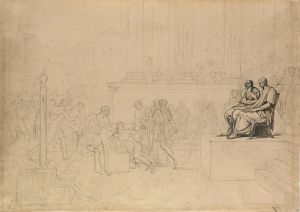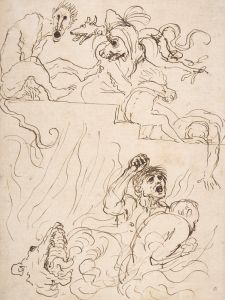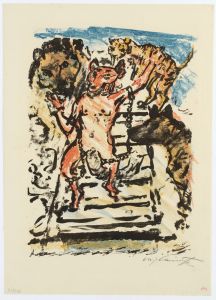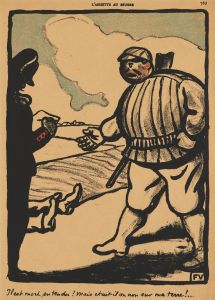
Elsje Christiaens Hanging on a Gibbet
A hand-painted replica of Rembrandt van Rijn’s masterpiece Elsje Christiaens Hanging on a Gibbet, meticulously crafted by professional artists to capture the true essence of the original. Each piece is created with museum-quality canvas and rare mineral pigments, carefully painted by experienced artists with delicate brushstrokes and rich, layered colors to perfectly recreate the texture of the original artwork. Unlike machine-printed reproductions, this hand-painted version brings the painting to life, infused with the artist’s emotions and skill in every stroke. Whether for personal collection or home decoration, it instantly elevates the artistic atmosphere of any space.
"Elsje Christiaens Hanging on a Gibbet" is a drawing by the renowned Dutch artist Rembrandt van Rijn. This work is a poignant example of Rembrandt's ability to capture the human condition and societal issues through his art. The drawing depicts the execution of Elsje Christiaens, a young Danish woman who was sentenced to death in Amsterdam in 1664.
Elsje Christiaens was a young immigrant who arrived in Amsterdam seeking work. Her story took a tragic turn when she was accused of murdering her landlady with an axe during a dispute over unpaid rent. The case quickly escalated, and Elsje was found guilty of murder. The punishment for such a crime was severe, and she was sentenced to death by hanging. In the 17th century, public executions were not only a form of punishment but also served as a deterrent to others. After her execution, Elsje's body was displayed on a gibbet, a common practice at the time to further shame the condemned and serve as a warning to the public.
Rembrandt's drawing captures the aftermath of this grim event. The work is notable for its raw and unflinching portrayal of Elsje's lifeless body hanging from the gibbet. Rembrandt's use of line and shading brings a stark realism to the scene, emphasizing the tragic fate of the young woman. The drawing is executed with a sense of immediacy and empathy, characteristic of Rembrandt's approach to capturing human emotion and suffering.
The drawing is part of a series of works by Rembrandt that explore themes of crime, punishment, and the human condition. It reflects the artist's interest in the darker aspects of life and his ability to convey complex emotions through his art. Rembrandt was known for his keen observation of human nature and his ability to depict it with honesty and sensitivity.
"Elsje Christiaens Hanging on a Gibbet" is housed in the collection of the Statens Museum for Kunst in Copenhagen, Denmark. The drawing is an important example of Rembrandt's work during the later period of his career, when he focused more on drawing and etching. It provides insight into the social and cultural context of 17th-century Amsterdam, highlighting issues of justice, morality, and the treatment of marginalized individuals.
The work is also significant for its historical context, as it documents a specific event and individual from the period. It serves as a reminder of the harsh realities of life in the 17th century and the often brutal nature of justice at the time. Rembrandt's portrayal of Elsje Christiaens invites viewers to reflect on the human stories behind historical events and the enduring impact of art in preserving these narratives.
In summary, "Elsje Christiaens Hanging on a Gibbet" is a powerful drawing by Rembrandt van Rijn that captures the tragic story of a young woman's execution in 17th-century Amsterdam. Through his masterful technique and empathetic approach, Rembrandt provides a poignant commentary on the themes of justice, punishment, and the human condition.


















